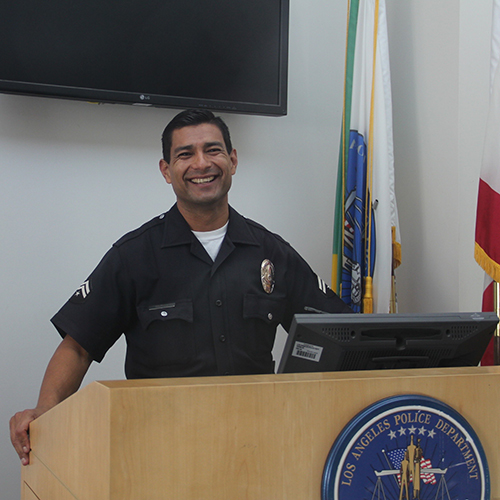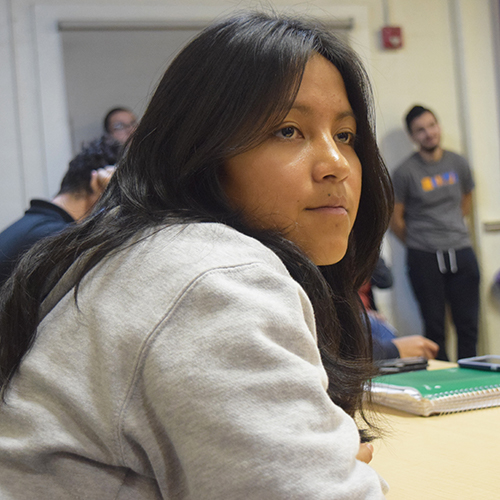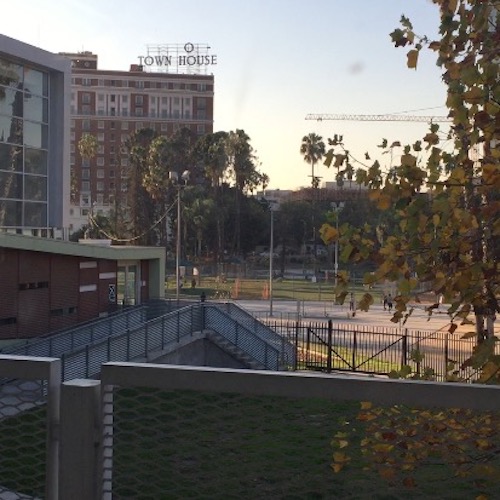Fighting to keep the balance
The neighbourhood's street vendors and the homeless are locked in an invisible struggle.

Hop off the 110 freeway and you’ll find, just west of downtown Los Angeles, one of the city’s unique microcosms: Westlake. Commonly referred to as MacArthur Park after the green space and lake at the heart of the community, the 2.72-square-mile neighbourhood is a low-income area in Central LA.
So what makes this area unique? The delicate balance that must be maintained to keep Westlake in order.
Although an estimated 120,000 people live in the neighborhood, 5.1 percent own their housing, while the remaining 94.9 percent pay rent. There’s an estimated 4,000 homeless individuals in Westlake, and many have set up their tents in MacArthur Park.
Westlake is also home to a dense population of street vendors, and all is not necessarily well.
Oscar R., a 48-year-old street vendor, has a contentious relationship with the homeless individuals who live in the area. A few months ago, a homeless woman destroyed his display, ruining hundreds of dollars’ worth of items.
"I think she was having a fit of some sort," Oscar said as he petted the small dog in his lap. "I've seen her walking around all day. She wasn’t wearing any slippers, and she was just wandering around. Then, out of nowhere, she’s screaming and bothering the other vendors."
According to Oscar, the woman knocked a few items off of other street vendors’ tables before she reached his table. Then, in the midst of a fit of rage, she swept half off the products off the table before flipping the whole thing over.
Oscar couldn't call the police to try to get justice because street vending is still illegal in Los Angeles despite concerted efforts to legalise it. All he could do was fend off the attacks of the woman, who he says eventually wandered back into the park. .
"It was very upsetting. She almost hit my dog. I think she was having mental issues," Oscar said.
Oscar isn’t the only street vendor with strong feelings when it comes to the area's homeless population. Alberta Sotomayor, a grandmother and primary caretaker of four children, has fostered a friendly relationship with a few of the area's homeless.
For Sotomayor, the homeless are not to be feared. This is why she has a hidden stash of mini-meals to hand out to the "regular" homeless individuals. She's been doing this for a few months, now, and it makes her feel like she's doing her part for the community.
"I take care of four children, and sometimes these people remind me of them. They’re a lot like children in that they need someone to take care of them," Sotomayor said, speaking in languid Spanish.
"I think to myself, what if my grandchildren needed someone to take care of them? I would want someone to give them a warm meal, at the very least," she added, patting the cross hanging from her neck. "There are so many people who've gone through things that led to them being homeless. They cannot help it. And the country isn't taking care of them, so someone should."
There are around 47,000 homeless individuals in Los Angeles County, according to the Los Angeles Homeless Services Authority’s 2015 Greater Los Angeles Homeless Count. The annual census catalogues the density of homelessness in neighborhoods across Los Angeles County. Los Angeles is famous across the nation for its homeless population. Skid Row, the most well-known of the "tent cities," spaces taken over by the temporary tents of homeless individuals, 'houses' an estimated 10,000 people.
Senior Lead Officer Victor Gutierrez of the LAPD Rampart Division addressed the issue of the area’s increasing homeless population.
"I’ve been on the job for a little over 29 years," Gutierrez said. "This problem is probably the most difficult problem I’ve had to deal with in my career. Having said that, at the end of the day, it’s really not a law enforcement problem. As we all know, homelessness is not a crime."
Gutierrez added: "A lot of people get down on their luck, maybe lose their job, sometimes they have mental illnesses, other times maybe they get hooked on narcotics. And it’s a downspiraling cycle. Homelessness is a problem where most of the community comes to us to solve it and honestly we are not the solution. It’s a very broad problem that a lot of different entities need to come together cohesively to combat. Everyone comes to the police when there is a problem [with the homeless] and its a problem we can’t solve."








